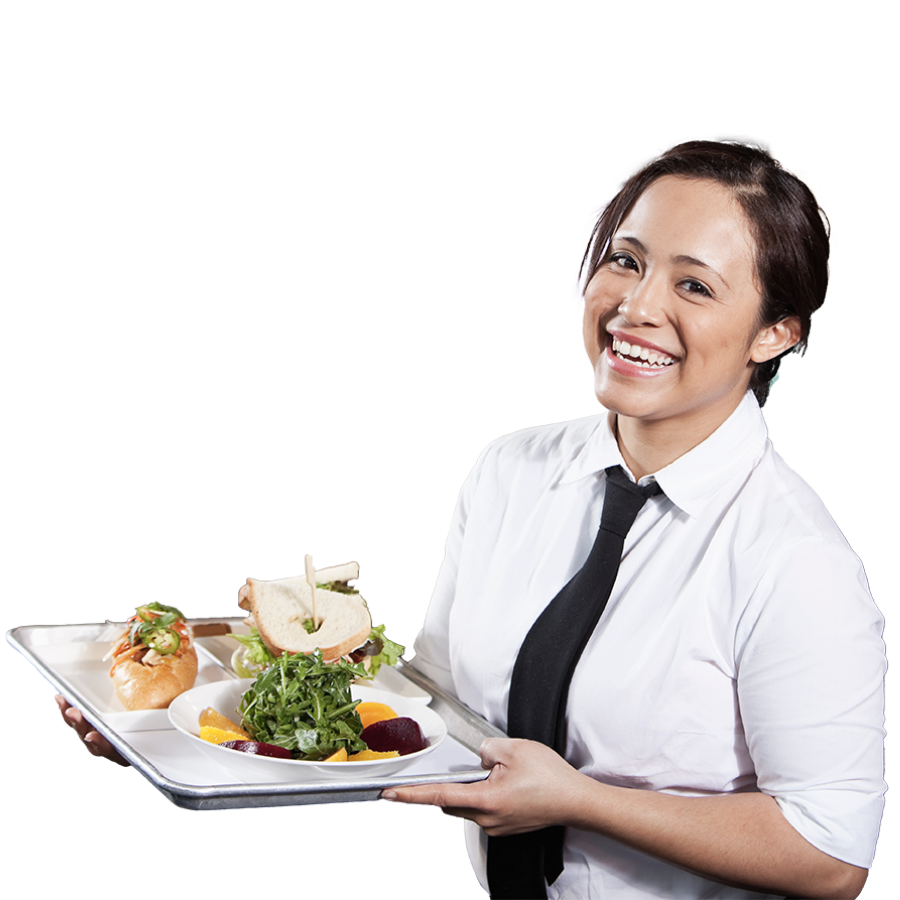New Year's Eve is a time of celebration, bringing together friends, family, fireworks, and fabulous feasts. As the anticipation starts to build, now is a good time to take a step back and consider the safety of the food we are going to serve.
Whether you are hosting a private event at home or preparing food in a commercial kitchen this New Year’s Eve, this comprehensive food safety guide will help make sure that 2023 ends on a high.
5 Food Handling Techniques to Keep NYE Celebrations Safe
Nobody wants to start the new year with a food-related illness. Fortunately, with the appropriate food handling procedures in place, this is a scenario that can easily be avoided. Below are five essential tips for maintaining food safety on New Year’s Eve:
1. Proper Storage and Temperature Control
Safe food storage is one of the fundamental aspects of food safety and to start with, you must ensure that food is stored at the correct temperature. According to the United States Department of Agriculture (USDA), food is most susceptible to pathogen growth at temperatures between 40°F and 140°F (Temperature Danger Zone). For this reason, the United States Food & Drug Administration (FDA) stipulates that commercial refrigerator temperatures must not exceed 40°F. Frozen food must be stored at 0°F or below.
In addition to getting storage temperatures correct, it’s important to use appropriate food wraps and containers when storing perishable foods as it can make a big difference when it comes to preserving food quality and safety. They should be airtight, clearly labeled and made from durable, food-safe materials. If reusable, containers must be thoroughly cleaned and sanitized between uses.
2. Cross-Contamination Prevention
Cross-contamination is a common cause of foodborne illnesses and occurs when harmful pathogens are transferred from one food item to another. This is a particular concern when handling raw meat, poultry and seafood. To prevent cross-contamination:
- Use separate cutting boards and knives for different types of food.
- Never place cooked food back on the same plate or surface that held raw food.
- Wash hands thoroughly when transitioning between tasks.
- Clean and sanitize surfaces and utensils after they come into contact with raw products.
3. Personal Hygiene
The importance of personal hygiene in food safety cannot be overstated. Simple practices such as washing hands thoroughly with soap and water before handling food and after touching raw meat can prevent the spread of bacteria. Additionally, it’s advisable to use disposable gloves when preparing food and to change them frequently, especially when switching between different food types.
4. Cooking to Safe Temperatures
Cooking food to the right temperature is essential to kill harmful bacteria. Use a food thermometer to check the internal temperature of meats, casseroles and other dishes.
- Poultry should be cooked to an internal temperature of 165°F.
- Beef, pork, lamb, and veal (steaks, chops, and roasts) should reach 145°F with a 3-minute rest time.
- Ground meats should reach 160°F.
5. Safe Serving Practices
During NYE celebrations, food is often left out for guests to enjoy over several hours. However, perishable foods should not be left at room temperature for more than two hours. If the room is warm, reduce this time to one hour. Food can be kept at a safe temperature using the following methods:
- Slow cookers and warming trays: This equipment ensures that food remains above the Temperature Danger Zone (TDZ), which is critical for preventing the growth of harmful pathogens.
- Ice trays and portable refrigeration units: These are effective solutions for chilling cold items. Keeping cold foods at a safe temperature (below 40°F or 4°C) is essential to slow down bacterial growth. Ice trays can be used for short-term cooling, while portable refrigeration units are ideal for longer periods, especially in settings without access to standard refrigeration.
The Responsibilities of a Commercial Food Business
When preparing, handling and serving food on New Year’s Eve, food businesses must follow established food safety protocols and ensure compliance with state legislation.
As well as following the five food handling techniques mentioned above, food establishments should implement an effective food safety plan based on HACCP principles to provide structure to their approach.
Implementing a HACCP Plan
The Hazard Analysis Critical Control Points (HACCP) system provides a proactive framework for food safety. When incorporated into the food safety plan it can help staff identify specific hazards and manage them accordingly.
The HACCP system encourages the following practices:
- Hazard Analysis: Identifying potential food safety hazards (physical, chemical and biological).
- Critical Control Points (CCPs): Determining points in the process where control can be applied to prevent or reduce hazards.
- Critical Limits: Establishing maximum and minimum values to which biological, chemical, and physical parameters must be controlled at a CCP.
- Monitoring Procedures: Regularly monitoring CCPs to ensure they remain within critical limits.
Corrective Actions: Taking action when monitoring shows that a CCP is not under control. - Verification Procedures: Maintaining documentation for verification and accountability.
Food Handler Training
New Year's Eve parties often feature a wide variety of dishes, making it a prime time for the potential spread of foodborne illnesses. Understanding and implementing food safety practices is vital to prevent these risks.
Food handler training is designed to educate those who handle, prepare and serve food on the best practices for maintaining food safety. Userve’s Food Handler Training Program features three units covering essential topics such as proper food storage, temperature control, cross-contamination prevention, allergen management and personal hygiene.
Unit 1 - Understanding Food Safety:
- Food contamination
- Types of contamination
- Perishable food
- Bacteria
- Other types of microorganisms
- Foodborne illness and high-risk groups
- Food allergies
Unit 2 - Preventing Foodborne Illness:
- Personal Hygiene
- Workplace Facilities & Behaviors
- Uniforms & Hair Care
- Illness & Onsite Injuries
- Temperature Zones & Time Control
- Thermometers
- Cleaning & Sanitizing
- Maintaining Food Premises
Unit 3 - Working with Food Safely
- Receiving, Checking & Storing Food
- Working with Food Safely
- Serving Food Safely
With properly trained staff onboard, businesses can significantly reduce the risk of foodborne illnesses and allergic reactions at NYE events. Other benefits include increased consumer confidence, a reduction in food waste and compliance with food safety legislation.
Moral and Legal Responsibilities
Protecting the health and safety of customers is paramount, both from a moral and legal standpoint. Food handler training is an essential part of this, equipping food industry personnel with the necessary skills to avoid incidents of foodborne diseases or allergic reactions among consumers.
In many states and counties, individuals involved in food service, preparation, transportation, or the cleaning and sanitizing of food equipment and utensils are legally required to undergo some level of food handler or food safety training. Some states even mandate that food handling staff must provide evidence to show that they have completed a food safety course before commencing employment.
In certain states, such as Illinois, Texas, and California, it’s compulsory for food handlers to undergo specific training sanctioned by the ANSI National Accreditation Board (ANAB). Userve’s ANAB-accredited training programs guarantee compliance with current state regulations.
Food safety inspectors conduct thorough examinations of food service establishments to ensure they meet the relevant food safety regulations. This includes checking that food handler training standards are being followed. Failing to comply with these standards could result in fines or, in severe cases, the closure of the business.
Additionally, depending on the severity of the offense, the financial impact of a food safety violation can be significant. By proactively participating in food safety training, businesses can significantly lower the risk of fines, lawsuits and legal costs.
Register for the Userve Food Handler Course
The countdown to 2024 has already begun; secure the wellbeing of New Year’s Eve partygoers by reinforcing your commitment to food safety.
Food handler training goes beyond regulatory compliance; it’s an essential element of a sustainable business strategy. Investing in professional training programs not only ensures the safety and satisfaction of your customers, but it also sets your business up for success in 2024 and beyond.
The Userve Food Handler Course provides a fast, flexible way to obtain your Food Handler Card. Want to know more? Contact us today or follow the link below for more information regarding food handler training in your state.

